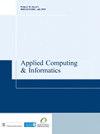A dynamic reward-enhanced Q-learning approach for efficient path planning and obstacle avoidance in mobile robotics
IF 12.3
Q1 COMPUTER SCIENCE, INFORMATION SYSTEMS
引用次数: 0
Abstract
PurposeThe purpose of the paper is to propose and demonstrate a novel approach for addressing the challenges of path planning and obstacle avoidance in the context of mobile robots (MR). The specific objectives and purposes outlined in the paper include: introducing a new methodology that combines Q-learning with dynamic reward to improve the efficiency of path planning and obstacle avoidance. Enhancing the navigation of MR through unfamiliar environments by reducing blind exploration and accelerating the convergence to optimal solutions and demonstrating through simulation results that the proposed method, dynamic reward-enhanced Q-learning (DRQL), outperforms existing approaches in terms of achieving convergence to an optimal action strategy more efficiently, requiring less time and improving path exploration with fewer steps and higher average rewards.Design/methodology/approachThe design adopted in this paper to achieve its purposes involves the following key components: (1) Combination of Q-learning and dynamic reward: the paper’s design integrates Q-learning, a popular reinforcement learning technique, with dynamic reward mechanisms. This combination forms the foundation of the approach. Q-learning is used to learn and update the robot’s action-value function, while dynamic rewards are introduced to guide the robot’s actions effectively. (2) Data accumulation during navigation: when a MR navigates through an unfamiliar environment, it accumulates experience data. This data collection is a crucial part of the design, as it enables the robot to learn from its interactions with the environment. (3) Dynamic reward integration: dynamic reward mechanisms are integrated into the Q-learning process. These mechanisms provide feedback to the robot based on its actions, guiding it to make decisions that lead to better outcomes. Dynamic rewards help reduce blind exploration, which can be time-consuming and inefficient and promote faster convergence to optimal solutions. (4) Simulation-based evaluation: to assess the effectiveness of the proposed approach, the design includes a simulation-based evaluation. This evaluation uses simulated environments and scenarios to test the performance of the DRQL method. (5) Performance metrics: the design incorporates performance metrics to measure the success of the approach. These metrics likely include measures of convergence speed, exploration efficiency, the number of steps taken and the average rewards obtained during the robot’s navigation.FindingsThe findings of the paper can be summarized as follows: (1) Efficient path planning and obstacle avoidance: the paper’s proposed approach, DRQL, leads to more efficient path planning and obstacle avoidance for MR. This is achieved through the combination of Q-learning and dynamic reward mechanisms, which guide the robot’s actions effectively. (2) Faster convergence to optimal solutions: DRQL accelerates the convergence of the MR to optimal action strategies. Dynamic rewards help reduce the need for blind exploration, which typically consumes time and this results in a quicker attainment of optimal solutions. (3) Reduced exploration time: the integration of dynamic reward mechanisms significantly reduces the time required for exploration during navigation. This reduction in exploration time contributes to more efficient and quicker path planning. (4) Improved path exploration: the results from the simulations indicate that the DRQL method leads to improved path exploration in unknown environments. The robot takes fewer steps to reach its destination, which is a crucial indicator of efficiency. (5) Higher average rewards: the paper’s findings reveal that MR using DRQL receive higher average rewards during their navigation. This suggests that the proposed approach results in better decision-making and more successful navigation.Originality/valueThe paper’s originality stems from its unique combination of Q-learning and dynamic rewards, its focus on efficiency and speed in MR navigation and its ability to enhance path exploration and average rewards. These original contributions have the potential to advance the field of mobile robotics by addressing critical challenges in path planning and obstacle avoidance.用于移动机器人高效路径规划和避障的动态奖励增强 Q 学习方法
目的 本文旨在提出并演示一种新方法,以应对移动机器人(MR)在路径规划和避障方面的挑战。本文概述的具体目标和目的包括:引入一种将 Q-learning 与动态奖励相结合的新方法,以提高路径规划和避障的效率。通过减少盲目探索和加速最佳解决方案的收敛,增强移动设备在陌生环境中的导航能力,并通过仿真结果证明,所提出的方法--动态奖励增强 Q-learning(DRQL)--在更高效地收敛到最佳行动策略方面优于现有方法,所需的时间更短,并能以更少的步骤和更高的平均奖励改进路径探索。设计/方法/途径本文为实现其目的而采用的设计包括以下关键部分:(1) Q-learning 与动态奖励相结合:本文的设计将 Q-learning 这一流行的强化学习技术与动态奖励机制相结合。这种结合构成了该方法的基础。Q-learning 用于学习和更新机器人的行动值函数,而动态奖励则用于有效地指导机器人的行动。(2) 导航过程中的数据积累:当 MR 在陌生环境中导航时,它会积累经验数据。这种数据收集是设计的关键部分,因为它能让机器人从与环境的互动中学习。(3) 动态奖励集成:动态奖励机制被集成到 Q 学习过程中。这些机制会根据机器人的行动向其提供反馈,引导其做出能带来更好结果的决策。动态奖励有助于减少耗时、低效的盲目探索,促进更快地收敛到最优解。(4) 基于仿真的评估:为评估所建议方法的有效性,本设计包括一项基于仿真的评估。该评估使用模拟环境和场景来测试 DRQL 方法的性能。(5) 性能指标:设计中包含衡量方法成功与否的性能指标。这些指标可能包括收敛速度、探索效率、步数以及机器人导航过程中获得的平均奖励:(1) 高效的路径规划和避障:本文提出的 DRQL 方法为 MR 带来了更高效的路径规划和避障。这是通过 Q-learning 和动态奖励机制的结合来实现的,它能有效地指导机器人的行动。(2) 更快地收敛到最优解:DRQL 加快了 MR 向最优行动策略收敛的速度。动态奖励有助于减少盲目探索的需要,而盲目探索通常会消耗时间,这就能更快地获得最优解。(3) 减少探索时间:动态奖励机制的整合大大减少了导航过程中所需的探索时间。探索时间的减少有助于提高路径规划的效率和速度。(4) 改进路径探索:模拟结果表明,DRQL 方法改进了在未知环境中的路径探索。机器人到达目的地所需的步骤更少,这是衡量效率的重要指标。(5) 更高的平均奖励:本文的研究结果显示,使用 DRQL 的 MR 在导航过程中获得了更高的平均奖励。原创性/价值本文的原创性源于其独特的 Q-learning 和动态奖励的结合、其对 MR 导航效率和速度的关注以及其增强路径探索和平均奖励的能力。这些原创性贡献有望解决路径规划和避障方面的关键难题,从而推动移动机器人领域的发展。
本文章由计算机程序翻译,如有差异,请以英文原文为准。
求助全文
约1分钟内获得全文
求助全文
来源期刊

Applied Computing and Informatics
Computer Science-Information Systems
CiteScore
12.20
自引率
0.00%
发文量
0
审稿时长
39 weeks
期刊介绍:
Applied Computing and Informatics aims to be timely in disseminating leading-edge knowledge to researchers, practitioners and academics whose interest is in the latest developments in applied computing and information systems concepts, strategies, practices, tools and technologies. In particular, the journal encourages research studies that have significant contributions to make to the continuous development and improvement of IT practices in the Kingdom of Saudi Arabia and other countries. By doing so, the journal attempts to bridge the gap between the academic and industrial community, and therefore, welcomes theoretically grounded, methodologically sound research studies that address various IT-related problems and innovations of an applied nature. The journal will serve as a forum for practitioners, researchers, managers and IT policy makers to share their knowledge and experience in the design, development, implementation, management and evaluation of various IT applications. Contributions may deal with, but are not limited to: • Internet and E-Commerce Architecture, Infrastructure, Models, Deployment Strategies and Methodologies. • E-Business and E-Government Adoption. • Mobile Commerce and their Applications. • Applied Telecommunication Networks. • Software Engineering Approaches, Methodologies, Techniques, and Tools. • Applied Data Mining and Warehousing. • Information Strategic Planning and Recourse Management. • Applied Wireless Computing. • Enterprise Resource Planning Systems. • IT Education. • Societal, Cultural, and Ethical Issues of IT. • Policy, Legal and Global Issues of IT. • Enterprise Database Technology.
文献相关原料
| 公司名称 | 产品信息 | 采购帮参考价格 |
|---|
 求助内容:
求助内容: 应助结果提醒方式:
应助结果提醒方式:


